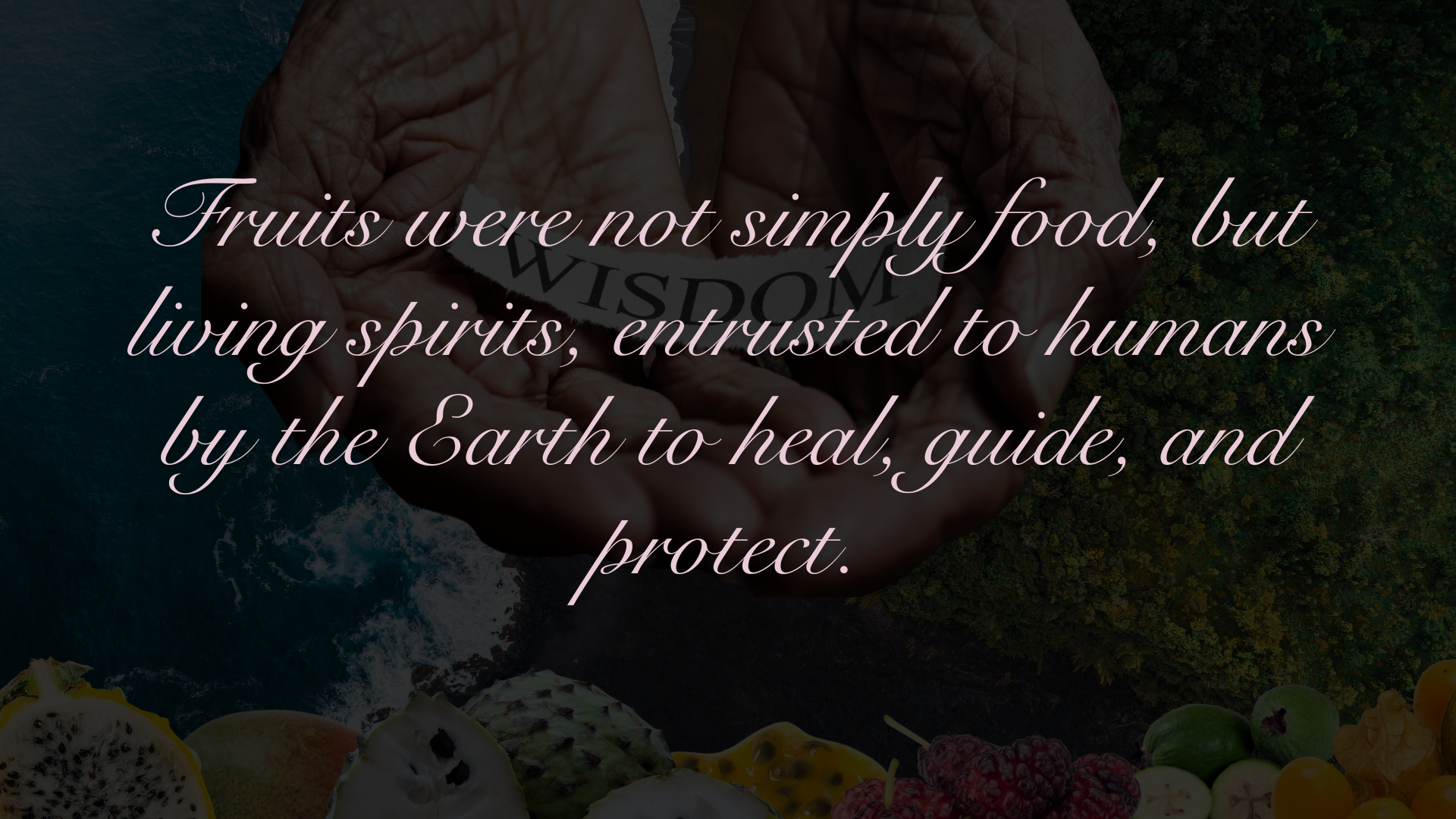Before science labeled them “superfruits,” these vibrant gifts of nature were medicine, memory, and sacred ritual. Across Colombia, from the windswept páramos of the Andes to the lush depths of the Amazon and the rhythmic coasts of the Pacific, fruits like uchuva, feijoa, guanábana, and camu camu, to name a few, were not simply food, but living spirits, entrusted to humans by the Earth to heal, guide, and protect.
In the oral traditions of Indigenous peoples such as the Muisca, Tikuna, and Uitoto, fruit trees were seen as intermediaries between worlds, rooted in soil yet stretching toward the cosmos.
Each fruit was believed to carry its own ánima or soul, often linked to deities, ancestors, or elemental forces like water, sun, and moon. To pick and eat fruit was not a casual act; it was preceded by gratitude, songs, or offerings, a ritual of reciprocity acknowledging the spirit of the plant and its permission to nourish the body.
Among Afro-Colombian communities along the Pacific coast, ancestral knowledge passed down through curanderas and abuelas wove fruits into protective baths, postpartum rituals, and spiritual cleansings. The scent of a fruit, its color, its season, all were considered signs. Fruits were not just eaten; they were interpreted.
To eat fruit, then, was not merely to nourish the body, but to participate in a sacred act of balance, a conversation between humans and the land, the visible and the invisible, the physical and the spiritual.
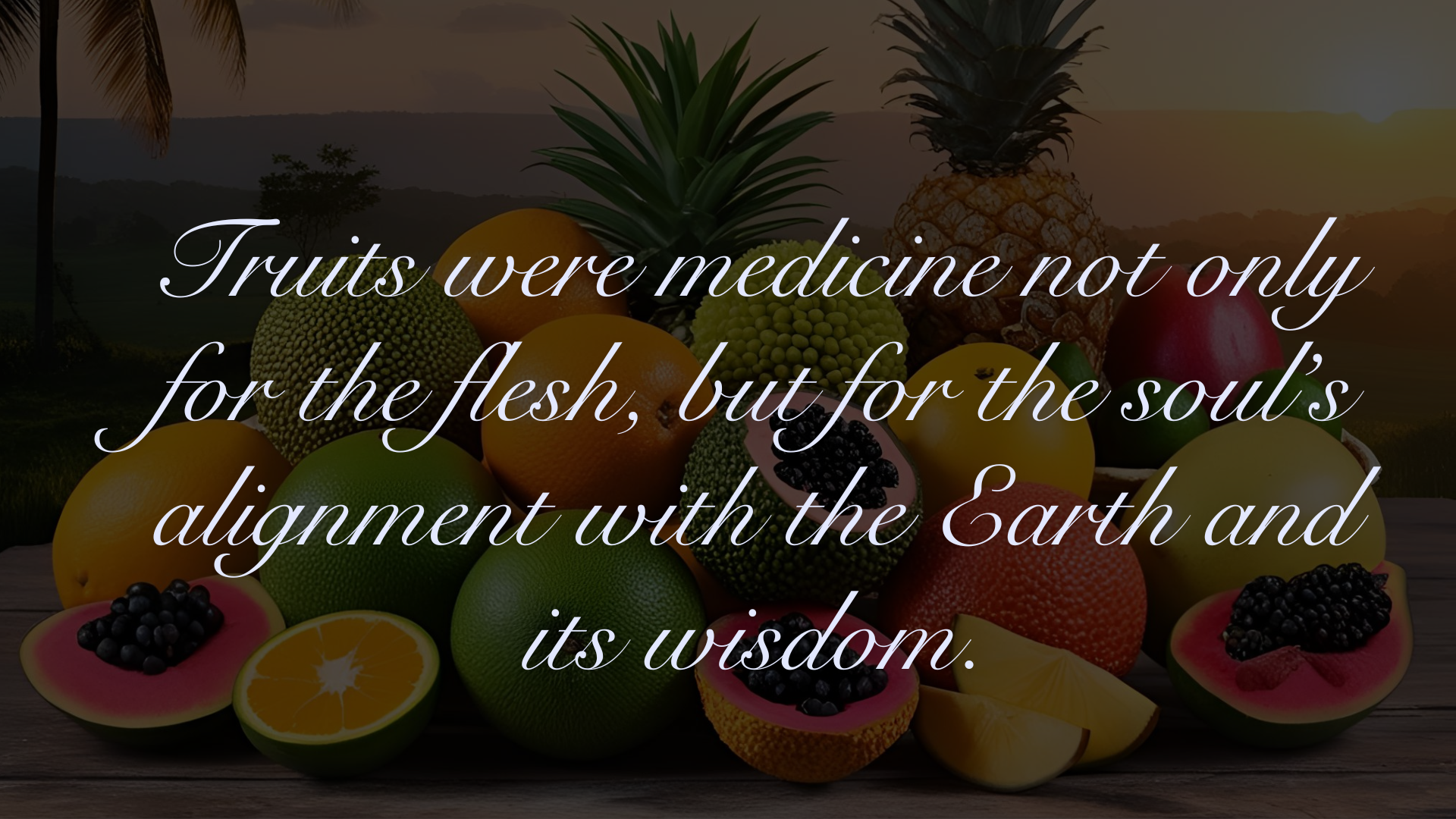
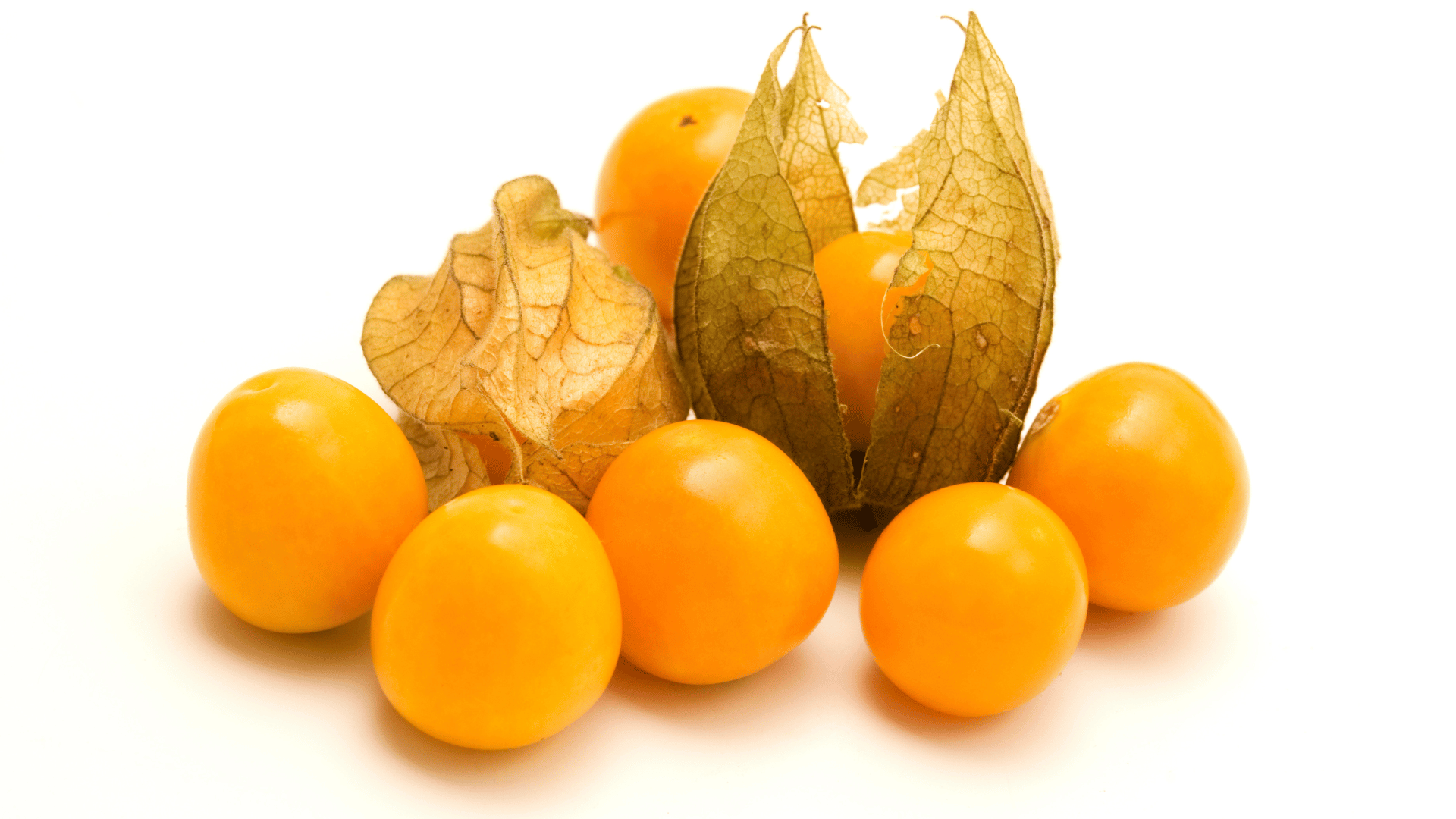
In the highlands once ruled by the Muisca, the uchuva, known locally as uvilla or topotopo, was considered a fruit of transition. The Muisca believed in the cyclical nature of life, and uchuva, with its protective lantern-like calyx, symbolized rebirth and protection. It was offered in rituals dedicated to Chía, the moon goddess, as a symbol of inner light during dark times.
Elders used it in infusions for cleansing the blood and calming emotional imbalances. According to oral traditions collected by Colombian anthropologists like Gerardo Reichel-Dolmatoff, fruits that glowed with golden hues were seen as imbued with solar energy, used to uplift and realign. Today, science confirms its antioxidant and anti-inflammatory effects, a mirror of its ancient role in purification and emotional renewal.
In the Amazon and Caribbean lowlands, guanábana (Annona muricata) has long been known not just as food, but as a spiritual protector. Among the Tikuna, Uitoto, and Wayuu peoples, the tree was considered a guardian spirit. The fruit, bark, and leaves were all used in healing ceremonies to remove blockages in the body and soul. In some Yagé (ayahuasca) traditions, guanábana leaves are used to prepare the body before ceremony, helping calm the nervous system and release fear.
In Afro-Colombian and Indigenous oral traditions, it’s said that guanábana trees grow where the Earth wants to cleanse itself, places of deep energy. The fruit was consumed by those needing vision, recovery, or renewal, especially after loss. Modern research highlights its antibacterial, anti-inflammatory, and potentially cytotoxic properties, but these are only one layer of a healing wisdom that spans generations.
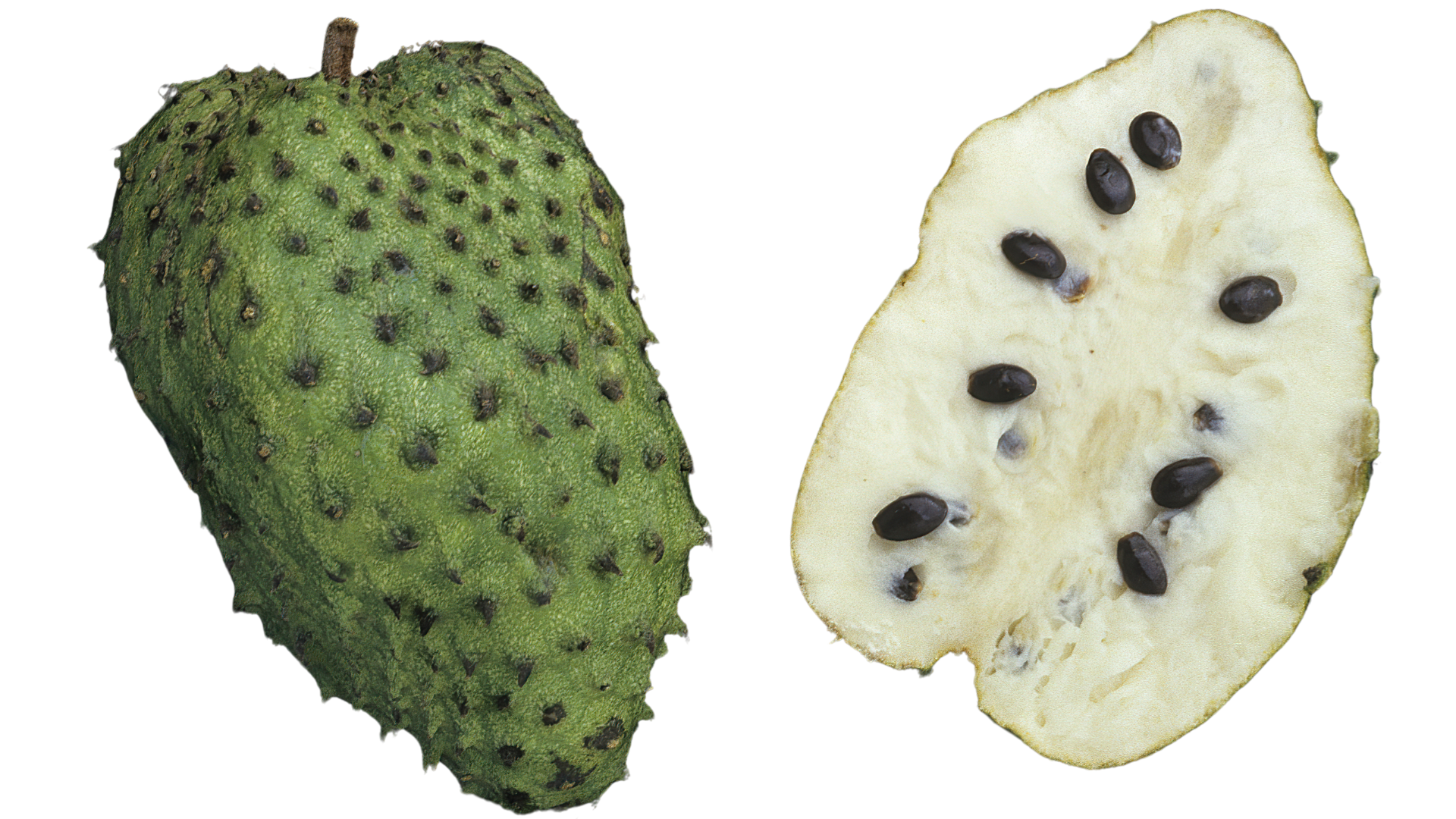
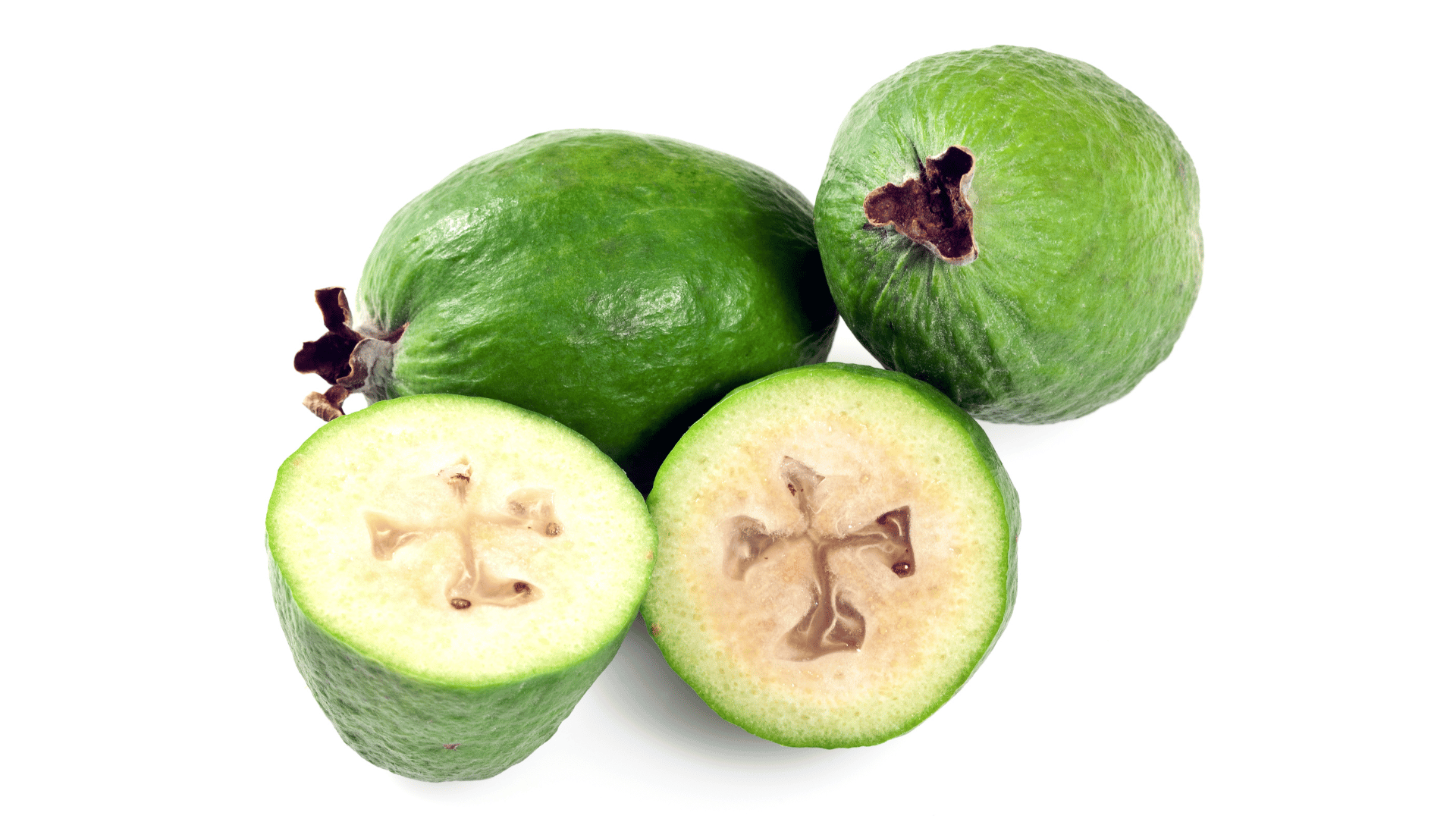
Feijoa, or guayabo del país, has been embraced and woven into Andean tradition, especially in the Cundinamarca and Boyacá regions where the Muisca lived. Known for its fragrant, almost ethereal aroma, it was considered a fruit of the wind and memory. Muisca healers (sagas) believed that scents held ancestral knowledge, and fruits like feijoa, fragrant and hard to classify, were used to awaken intuition and reflection.
Infusions of feijoa leaf were sometimes used to “cool the fire” of excessive thought or anxiety. Today, its folate and brain-supportive compounds align with this legacy of sharpening focus and calming the spirit. In some contemporary spiritual herbalism in Colombia, it’s used in limpia (spiritual cleansings) to remove what’s “stuck” in the mind or heart.
The Amazon is known by many Indigenous peoples as the “mother of medicines,” and its fruits are seen as living beings. Camu camu, packed with vitamin C, was used during the rainy season to protect against both physical and spiritual cold. Copoazú, the “white cacao,” was used in rituals of bonding and fertility, believed to soften the heart and attract positive energy.
Açaí berries were traditionally eaten before long treks or fasts, not just for energy, but to sharpen the senses and heighten awareness. The Yagua people considered açaí a fruit of warriors and visionaries.
These fruits were not simply functional. They were teachers, helping people remember their place in the world and re-align with the intelligence of the forest.
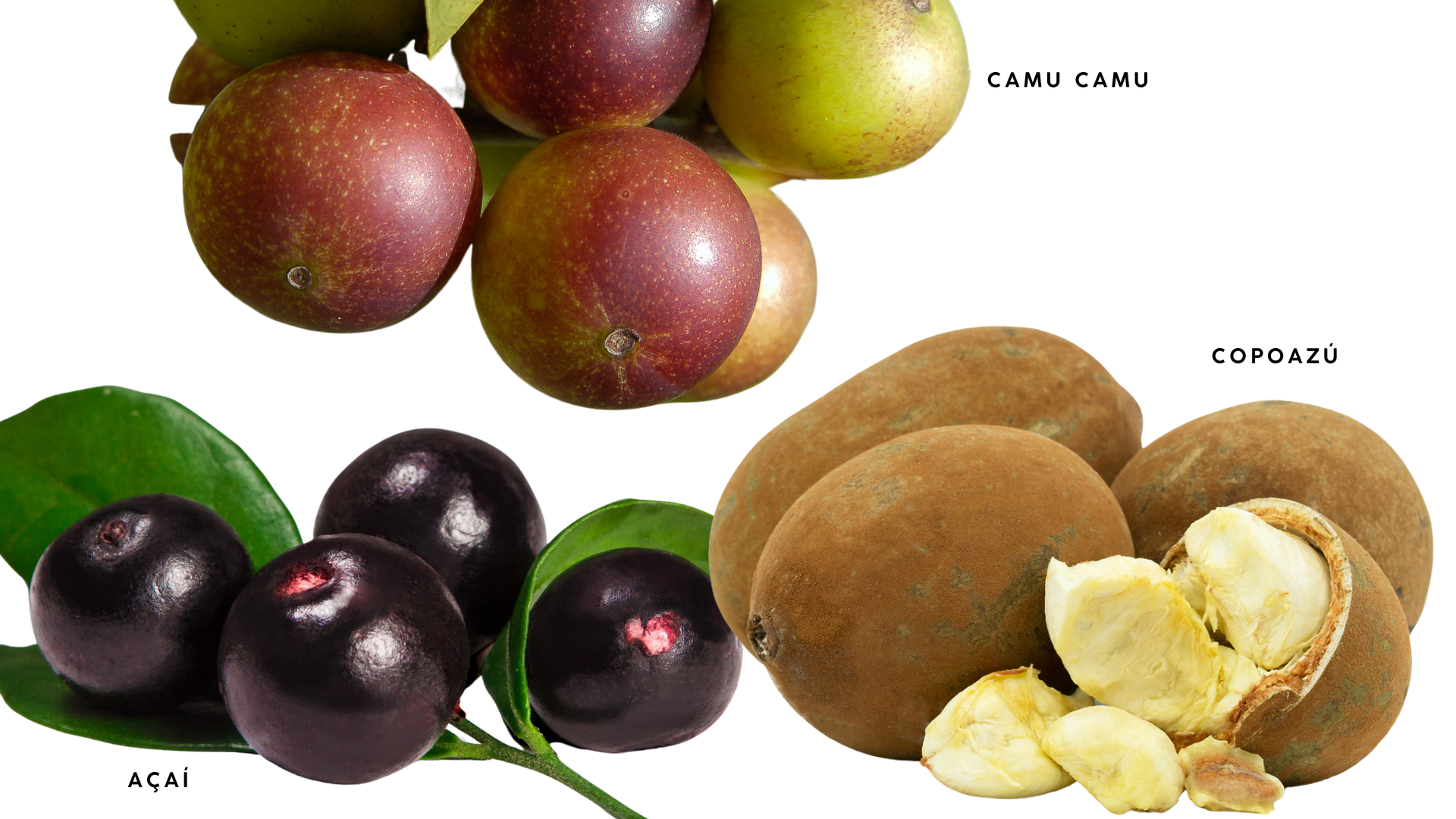
At Pacific Soul, we believe food is not just nourishment, it’s memory, reverence, and reconnection. The superfruits we offer aren’t trends. They are ancient companions, fruits that have walked alongside humanity for centuries, offering healing not only for the body but for the heart and soul.
When you eat our snacks or sip our brews, we invite you to pause and feel that connection:
To the sun-drenched Andes.
To the wisdom of the Amazon.
To the hands and prayers of the ancestors.
Because food should not just fill us.
It should remind us who we are.
